This article was co-authored by Alina Lane, DDS. Dr. Alina Lane is a Dentist who runs All Smiles Dentistry, a general practice dental office based in New York City. After completing a DDS at the University of Maryland, Dr. Lane completed a year-long clerkship in Implantology at the University of Maryland, where she focused on the advanced restoration of dental implants. She continued her advanced education by completing a General Practice Residency at Woodhull Medical Center, an affiliate of the NYU School of Medicine. She received the Woodhull Medical Center Resident of the Year 2012-2013.
There are 15 references cited in this article, which can be found at the bottom of the page.
wikiHow marks an article as reader-approved once it receives enough positive feedback. This article received 12 testimonials and 100% of readers who voted found it helpful, earning it our reader-approved status.
This article has been viewed 3,220,260 times.
Gleaming white teeth signal youth and vitality to many people. But as we age or consume products like tobacco or caffeine that can stain tooth surfaces, our teeth may look yellowish and dingy.[1] Although using hydrogen peroxide products or home mixtures may cause tooth sensitivity, you can safely use commercially-available hydrogen peroxide products or a home hydrogen peroxide mixture to whiten your teeth.[2]
Steps
Using Commercially-Available Whiteners
-
1Brush with a whitening toothpaste. Purchase a whitening toothpaste with hydrogen peroxide at your local pharmacy or grocery store. Brush with the product at least twice daily for at least one month to see results.[3]
- Buy a product with at least 3.5% hydrogen peroxide, which is the standard amount. Be aware that the more hydrogen peroxide in a product, the likely it is to make your teeth sensitive.[4]
- Brush your teeth twice a day with the toothpaste. It can take four to six weeks to notice results.[5]
- Recognize that toothpastes only remove surface stains from activities like drinking or smoking.[6]
- Consider using another peroxide product in addition to a toothpaste to get deeper stains and have better results.
- Look for the American Dental Association’s Seal of Acceptance to minimize the risk of using an unsafe product.[7]
-
2Place gel-filled trays on your teeth. There is some evidence that gel-filled trays with a 3% hydrogen peroxide gel can significantly whiten teeth.[8] Buy an over-the-counter gel tray or have your dentist prescribe one.[9]
- Buy either pre-filled trays or trays you fill with a product at your local pharmacy. Be aware that these products will fit most mouths and are not molded to your own teeth.[10]
- Ask your dentist to mold a tray to your mouth and give you a higher concentration peroxide solution for more optimal results.[11]
- Leave the tray in your mouth for the time suggested on the packaging. Most trays require application for 30 minutes three times a day for two weeks.[12]
- Discontinue use if you experience serious sensitivity, though most will stop after the treatment. Talk to you dentist about whether or not you should continue use.[13]
- Look for the ADA Seal of Acceptance to reduce the risk of getting an unsafe product.[14]
Advertisement -
3Apply whitening strips. Whitening strips are similar to trays but are more flexible and come with the peroxide solution already on the product. Apply whitening strips to your teeth if you want a pre-filled treatment that is flexible and doesn’t necessarily touch your gums, which can be sensitive to peroxide. Strips are just as safe as trays and provide better results than just brushing.[15]
- Consider using strips if you’ve had gum sensitivity with trays. Simply place the strips below your gum line.
- Buy whitening strips based on how much you want to whiten your teeth or mouth sensitivity. There are many different products available that offer results such as quicker and deeper whitening or strips for sensitive teeth.
- Follow all of the packaging directions and discontinue use if you have serious sensitivity.
- Check for the ADA Seal of Acceptance to help ensure you are getting a safe product.[16]
-
4Use a brush-on gel. Some companies offer hydrogen peroxide whiteners that you can brush or paint on your teeth.[17] These products come in different forms such as a pen or bottle of solution with brush.
- Compare different formats and see which one works best for your needs. For example, you might find it easier to use a pen-like applicator than one that is a brush and bottle of solution.
- Apply the product before bedtime each night for two weeks.[18] During the treatment period, avoid eating sugary foods and drinking beverages that could potentially stain your teeth, such as coffee.
- Follow the package instructions and discontinue use if your teeth and/ or gums are very sensitive.
-
5Consider a professional bleaching treatment. Dentists offer professionally applied hydrogen peroxide treatments used in conjunction with light or laser. Consider this option if you have very stained teeth or if you prefer to whiten with peroxide under a doctor’s supervision.[19]
- Be aware that dentists will use a hydrogen peroxide solution in the concentration of 25–40%, which is not available over-the-counter.[20]
- Consider this option if you have sensitive gums — inform your dentist that you have sensitive teeth or gums. Your dentist will protect your gums with a rubber dam or gel before the procedure.[21]
- Ask your dentist if this is the best option for you. It can be expensive and insurance may not cover the treatment.
Trying Natural Peroxide Whiteners
-
1Be aware of the risks of using hydrogen peroxide. There is conflicting consensus about the use of hydrogen peroxide in non-commercial products to whiten teeth.[22] Using non-tested mixtures with hydrogen peroxide on your teeth can cause oral sensitivity and other abnormalities on your gums.[23]
- Talk to your dentist before you try whitening your teeth with hydrogen peroxide or any mixtures with it.[24]
- Be aware that while these natural methods may be less expensive, they could cause damage that is expensive to correct.
- Recognize that these solutions only clean surface stains and may not be as effective as commercially available hydrogen peroxide products.
- Make sure to use the lowest concentration hydrogen peroxide possible to help protect your gums and oral cavity.[25]
-
2Swish with a hydrogen peroxide mouthwash. There is some evidence that rinsing with a hydrogen peroxide and water mouthwash can be safe when used over a longer period of time. It may also whiten your teeth and help prevent stains.[26] Swish a mixture in your mouth daily to help whiten your teeth and ward off bacteria.
- Use 2–3.5% hydrogen peroxide, which you can get at your local pharmacy. Using anything higher in your mouth cavity can be dangerous.
- Pour 1 cup of the peroxide into a cup and mix it with 1 cup of distilled water.
- Swish around your mouth for 30 seconds to a minute.
- Spit out the solution when you’re finished or if the solutions hurts. Rinse your mouth with water.
- Avoid swallowing the mouthwash, which could cause health problems.
- Consider buying a commercially available mouthwash with hydrogen peroxide.
-
3Make a hydrogen peroxide and baking soda paste. Using a paste of hydrogen peroxide and baking soda can whiten your teeth and soothe sore gums. Brush with the paste daily or use it a couple of times a week like a mask.
- Make sure you’re using 2–3.5% hydrogen peroxide.
- Put a couple of teaspoons of baking soda into a dish. Add a small amount of the peroxide and mix it with the baking soda. Keep adding a small amount of peroxide until you have a thick-ish paste.
- Brush the paste onto your teeth in small, circular motions for two minutes.[27] You can also apply it with your fingertips to stimulate your gums.
- Brush with the paste for a couple of minutes or leave it on your teeth for a few minutes for best results.
- Rinse the solution off of your teeth by swishing with water from the bathroom sink.
- Rinse the paste off of your teeth.
-
4Prevent staining if possible. In addition to using your natural products, avoid anything that might stain your teeth if you can. Brushing or rinsing right after you consume them may help reduce staining.[28] Things that can stain your teeth or make them more prone to staining are:
Expert Q&A
Did you know you can get expert answers for this article?
Unlock expert answers by supporting wikiHow
-
QuestionWill whitening with hydrogen peroxide make my teeth more sensitive?
 Alina Lane, DDSDr. Alina Lane is a Dentist who runs All Smiles Dentistry, a general practice dental office based in New York City. After completing a DDS at the University of Maryland, Dr. Lane completed a year-long clerkship in Implantology at the University of Maryland, where she focused on the advanced restoration of dental implants. She continued her advanced education by completing a General Practice Residency at Woodhull Medical Center, an affiliate of the NYU School of Medicine. She received the Woodhull Medical Center Resident of the Year 2012-2013.
Alina Lane, DDSDr. Alina Lane is a Dentist who runs All Smiles Dentistry, a general practice dental office based in New York City. After completing a DDS at the University of Maryland, Dr. Lane completed a year-long clerkship in Implantology at the University of Maryland, where she focused on the advanced restoration of dental implants. She continued her advanced education by completing a General Practice Residency at Woodhull Medical Center, an affiliate of the NYU School of Medicine. She received the Woodhull Medical Center Resident of the Year 2012-2013.
Board Certified Dentist
-
QuestionHow does hydrogen peroxide whiten teeth?
 Alina Lane, DDSDr. Alina Lane is a Dentist who runs All Smiles Dentistry, a general practice dental office based in New York City. After completing a DDS at the University of Maryland, Dr. Lane completed a year-long clerkship in Implantology at the University of Maryland, where she focused on the advanced restoration of dental implants. She continued her advanced education by completing a General Practice Residency at Woodhull Medical Center, an affiliate of the NYU School of Medicine. She received the Woodhull Medical Center Resident of the Year 2012-2013.
Alina Lane, DDSDr. Alina Lane is a Dentist who runs All Smiles Dentistry, a general practice dental office based in New York City. After completing a DDS at the University of Maryland, Dr. Lane completed a year-long clerkship in Implantology at the University of Maryland, where she focused on the advanced restoration of dental implants. She continued her advanced education by completing a General Practice Residency at Woodhull Medical Center, an affiliate of the NYU School of Medicine. She received the Woodhull Medical Center Resident of the Year 2012-2013.
Board Certified Dentist
Warnings
- Be careful not to swallow hydrogen peroxide during the whitening process. Call your dentist, doctor, or Poison Control if this accidentally happens.⧼thumbs_response⧽
Things You'll Need
- Hydrogen peroxide
- Baking soda
- Toothbrush
References
- ↑ http://www.bu.edu/today/2012/the-truth-about-teeth-whiteners/
- ↑ http://www.ada.org/en/about-the-ada/ada-positions-policies-and-statements/tooth-whitening-safety-and-effectiveness
- ↑ http://newsnetwork.mayoclinic.org/discussion/mayo-clinic-q-and-a-many-safe-choices-available-to-help-whiten-teeth/
- ↑ http://www.ada.org/en/about-the-ada/ada-positions-policies-and-statements/tooth-whitening-safety-and-effectiveness
- ↑ http://newsnetwork.mayoclinic.org/discussion/mayo-clinic-q-and-a-many-safe-choices-available-to-help-whiten-teeth/
- ↑ http://newsnetwork.mayoclinic.org/discussion/mayo-clinic-q-and-a-many-safe-choices-available-to-help-whiten-teeth/
- ↑ http://www.ada.org/en/about-the-ada/ada-positions-policies-and-statements/tooth-whitening-safety-and-effectiveness
- ↑ http://www.ncbi.nlm.nih.gov/pubmed/12638773
- ↑ http://www.ncbi.nlm.nih.gov/pubmed/12638773
- ↑ http://www.ncbi.nlm.nih.gov/pubmed/12638773
- ↑ http://newsnetwork.mayoclinic.org/discussion/mayo-clinic-q-and-a-many-safe-choices-available-to-help-whiten-teeth/
- ↑ http://www.ncbi.nlm.nih.gov/pubmed/12638773
- ↑ http://www.ada.org/en/about-the-ada/ada-positions-policies-and-statements/tooth-whitening-safety-and-effectiveness
- ↑ http://www.ada.org/en/about-the-ada/ada-positions-policies-and-statements/tooth-whitening-safety-and-effectiveness
- ↑ http://newsnetwork.mayoclinic.org/discussion/mayo-clinic-q-and-a-many-safe-choices-available-to-help-whiten-teeth/
- ↑ http://www.ada.org/en/about-the-ada/ada-positions-policies-and-statements/tooth-whitening-safety-and-effectiveness
- ↑ http://www.ada.org/en/about-the-ada/ada-positions-policies-and-statements/tooth-whitening-safety-and-effectiveness
- ↑ http://www.webmd.com/oral-health/features/whiten-your-teeth-at-home
- ↑ http://www.ada.org/en/about-the-ada/ada-positions-policies-and-statements/tooth-whitening-safety-and-effectiveness
- ↑ http://www.ada.org/en/about-the-ada/ada-positions-policies-and-statements/tooth-whitening-safety-and-effectiveness
- ↑ http://www.ada.org/en/about-the-ada/ada-positions-policies-and-statements/tooth-whitening-safety-and-effectiveness
- ↑ http://www.ncbi.nlm.nih.gov/pubmed/11225528
- ↑ http://www.ncbi.nlm.nih.gov/pubmed/8247815
- ↑ http://www.ada.org/en/about-the-ada/ada-positions-policies-and-statements/tooth-whitening-safety-and-effectiveness
- ↑ http://www.ncbi.nlm.nih.gov/pubmed/11225528
- ↑ http://www.ncbi.nlm.nih.gov/pubmed/11225528
- ↑ http://www.md-health.com/Brushing-Teeth-With-Baking-Soda.html
- ↑ http://www.webmd.com/oral-health/features/foods-stain-teeth-feature?page=2
- ↑ http://www.webmd.com/oral-health/features/foods-stain-teeth-feature
- ↑ http://www.webmd.com/oral-health/features/foods-stain-teeth-feature?page=2
About This Article
If you want to whiten your teeth with hydrogen peroxide, it’s safest to use a commercially-available product like a whitening toothpaste or a gel-filled tray. If you do use household hydrogen peroxide, try swishing with a mixture of at least one part water to one part hydrogen peroxide. You can also make a whitening paste out of hydrogen peroxide and baking soda, then dip your toothbrush in the paste and brush as usual. However, you should be aware that this can cause oral sensitivity and abnormalities on your gums. To learn more from our Dental Surgeon co-author, like how to whitening strips with peroxide solution on them, keep reading!

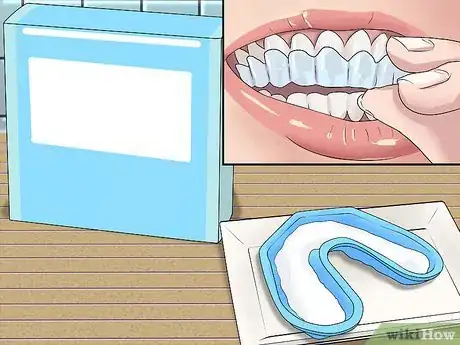
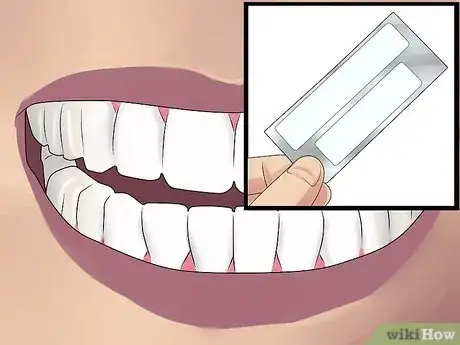



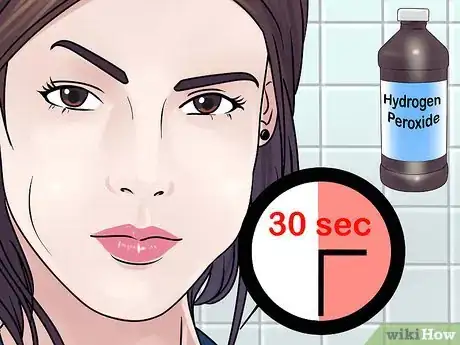
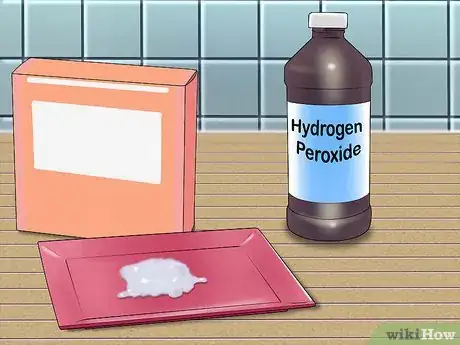
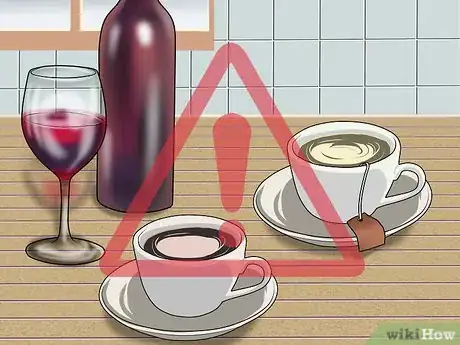
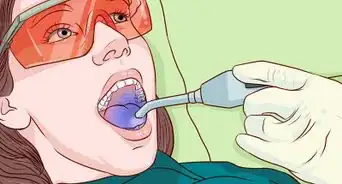

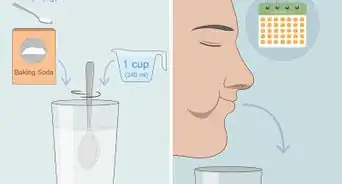
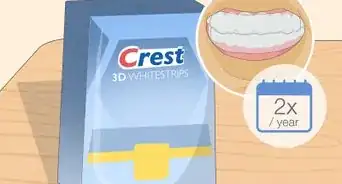

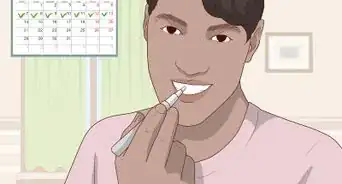




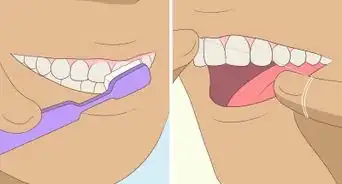













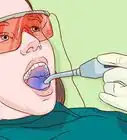


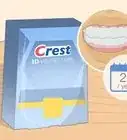




































Medical Disclaimer
The content of this article is not intended to be a substitute for professional medical advice, examination, diagnosis, or treatment. You should always contact your doctor or other qualified healthcare professional before starting, changing, or stopping any kind of health treatment.
Read More...